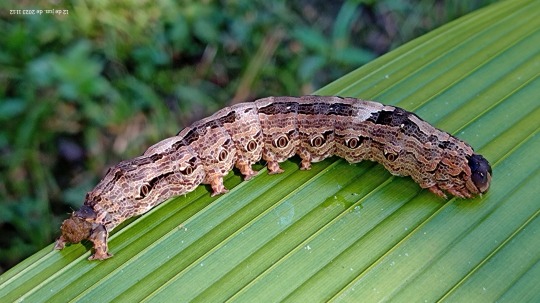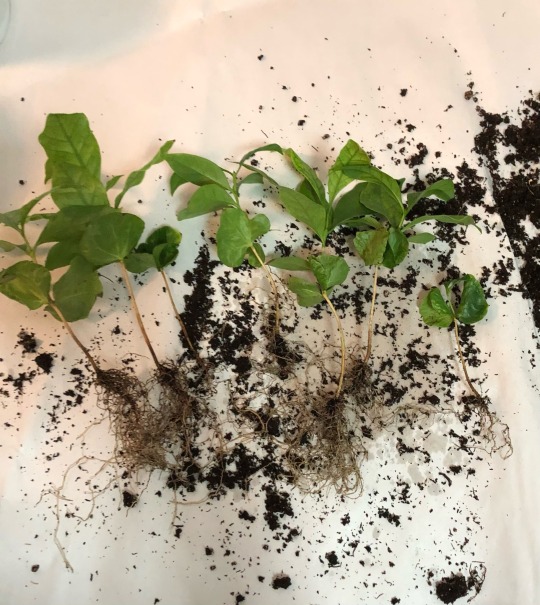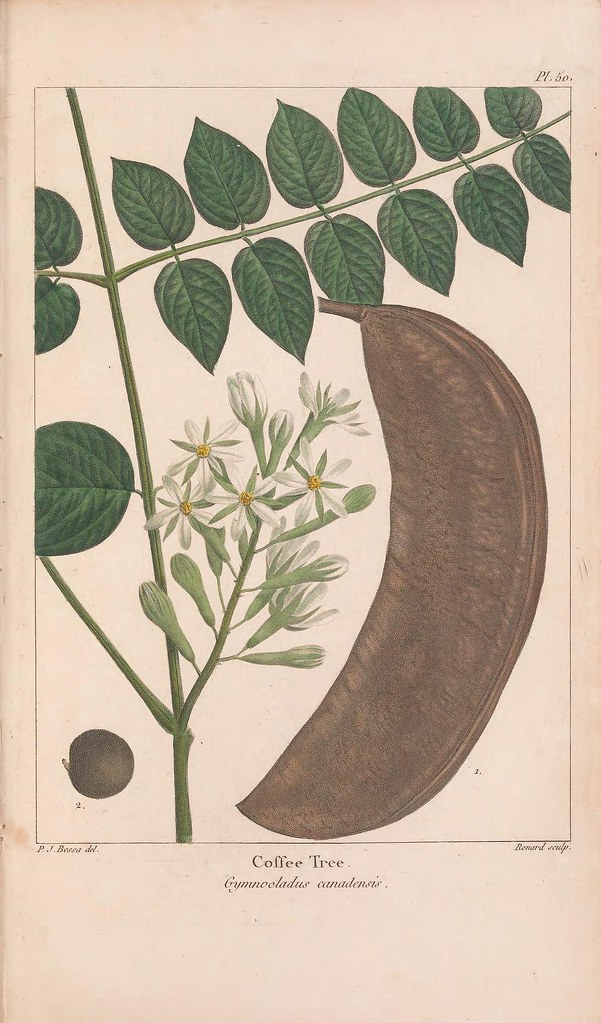#coffeetrees
Text
#coffee tree#botanical illustration#scientific illustration#botany#pictorial works#plants#periodicals#flowers#gymnocladus canadensis#Kentucky coffeetree#american coffee berry#Kentucky mahogany#nicker tree#stump tree
22 notes
·
View notes
Text
Tea Time: Kentucky Coffeetree
Learning to identify Kentucky coffeetree in the winter brings you one step closer to making a coffee-like (albeit caffeine-free) beverage from its seeds. Humans have a long history of occasionally using the “beans” of Gymnocladus dioicus to make this tisane, which explains common names like coffeetree, American coffee berry, and coffeenut. The process is a bit time consuming, and the end result…

View On WordPress
#Botany#coffee#ethnobotany#Fabaceae#foraging#fruits#Gymnocladus dioicus#Kentucky coffeetree#legumes#reviews and recommendations#seeds#Tea Time#tisane#tree fruits#Trees#winter
34 notes
·
View notes
Text
i may be stupid
#ate a tiny amount of kentucky coffeetree pulp bc i thought it was a honey locust u_u#foraging buddies im probably not gonna die right. it was like a tiny bit. but i am concerned#i am probably fine but i might throw up about it
18 notes
·
View notes
Text
I want to make people see how much has been taken away from them.
Did you know that there are dozens of species of fireflies, and some of them light up with a blue glow? Did you know about the moths? There are thousands of them, bright pink and raspberry orange and checkerboard and emerald. They are called things like Black-Etched Prominent, Purple Fairy, Pink-Legged Tiger, Small Mossy Glyph and Black-Bordered Lemon.
Did you know that there are moths that feed on lichens? Did you know about the blue and green bees? The rainbow-colored dogbane beetles? Your streams are supposed to teem with newts, salamanders, crawdads, frogs, and fishes. I want to take you by the hand and show you an animal you've never seen before, and say, "This exists! It's real! It's alive!"
There are secret wildflowers that no website will show you and that no list entitled "native species to attract butterflies!" will name. Every day I'm at work I see a new plant I didn't know existed.
The purple coneflowers and prairie blazing star are a tidepool, a puddle, and there is an ocean out there. There are wildflowers that only grow in a few specific counties in a single state in the United States, there are plants that are evolved specifically to live underneath the drip line of a dolomite cliff or on the border of a glade of exposed limestone bedrock. Did you know that different species of moss grow on the sides of a boulder vs. on top of it?
There are obscure trees you might have never seen—Sourwood, Yellowwood, Overcup Oak, Ninebark, Mountain Stewartia, Striped Maple, American Hophornbeam, Rusty Blackhaw, Kentucky Coffeetree. There are edible fruits you've never even heard of.
And it is so scary and sad that so many people live and work in environments where most of these wondrous living things have been locally extirpated.
There are vast tracts of suburb and town and city and barren pasture where a person could plausibly never learn of the existence of the vast majority of their native plants and animals, where a person might never imagine just how many there are, because they've only ever been exposed to the tiny handful of living things that can survive in a suburb and they have no reason to extrapolate that there are ten thousand more that no one is talking about.
It's like being a fish that has lived its whole life in a bucket, with no way of imagining the ocean. The insects in your field guide are a fraction of those that exist, of all the native plants to your area only a handful can be bought in a nursery.
Welcome to the Earth! It's beautiful! It's full of life! More things are real and beautiful and alive than a single person could imagine!!!
34K notes
·
View notes
Text
December 4th, 2023


Black Witch (Ascalapha odorata)
Distribution: Normally found from the USA to Brazil, with a preference for tropical regions; may migrate into Canada and most US states, but may also be blown north by hurricanes. Introduced in Hawaii.
Habitat: Found in a variety of landscapes, but most common in tropical forests and tropical shrublands. Also occasionally found in suburbs, parks and orchards.
Diet: Adults feed on decaying, fermenting fruit, such as bananas (they're attracted by the scent of volatile alcohol released by their decomposition!). Larvae feed on the soft tissues, like flower and leaf buds and fresh shoots, of its host plants; common hosts include Acacia trees, Kentucky coffeetree, candlebrush, mesquite and fig trees.
Description: The black witch is a large moth that may travel huge distances with ease. It's not uncommon for these bugs to fly northward into Canada, which spells a death sentence for them, as their host plants' distribution is limited to tropical and subtropical areas.
Perhaps due to their large size and dark colours, there is a great deal of folklore associated with the black witch moth, often designating it a bringer of bad luck or death. In some parts of Latin America, the black witch may bring death when it enters a house in which a person is sick and in Jamaica, it's considered to embody the lost soul of a malevolent spirit. The legends aren't all bad, though; in some parts of Hawaii, the moth represents the spirit of a recently-deceased loved one saying goodbye, and in the Bahamas, it represents good financial fortune.
(Images by Katja Schulz and Raymê Carvalho)
32 notes
·
View notes
Text
DUDE random kentucky coffeetree on the side of the road??? on god??
11 notes
·
View notes
Text
everyone thinks they’re so slick and can identify all kinds of deciduous trees until the white ash and kentucky coffeetree and hickory and beech come out…
#my thoughts#rick’s college era#me vs these fuckign trees#pinnate compound leaves are my fucking nemeses
3 notes
·
View notes
Text
Okay, listen to me. Introducing Joel Miller to Kentucky coffeetree and chicory as coffee substitutes. Are they perfect? No. But do they work? Yeah. Chicory works well enough you can just buy coffee/chicory blends.
4 notes
·
View notes
Note
What are some of your favorite “gifts from the forest” from your husband? I remember you saying he brings you random things he gets excited about.
Want to see my latest gift?

I can’t remember what I’ve shared before but I’ve also received a beaver stick, deer sheds, turtle shells, fossilized bones and wood, and all kinds of fun rocks

I love seed pods - I collect those on my own. Idk, there’s just nothing like a buckeye with a good thumb groove.
My children know about this quirk and my 3 yo will pick up assorted tree parts on their walks for us to share: sticks, branches, acorns, seed pods, etc. (Their new favorite thing is breaking open milkweed pods in the house and car)
Someone in our neighborhood has a Kentucky coffeetree and those suckers are my favorite, honey locusts are a close second


#gifts from the woods#ask#moonlightredfern#thank you for the ask#gifts from the forest#he also brings me gifts from the parking lot#(dropped change)#it brings my husband so much joy to spot a dime on a walk
5 notes
·
View notes
Text







Assorted selected seedlings, l-r, top to bottom: sugar pine (Pinus lambertiana), American persimmon (Diospyros virginiana), Acacia tysonii (now with phyllodes!), Erythrina herbacea, Bursera fagaroides, jojoba (Simmondsia chinensis), and Kentucky coffeetree (Gymnocladus dioicus).
15 notes
·
View notes
Text
Winter Trees and Shrubs: Kentucky Coffeetree
A few years ago, I was on the hunt for a Kentucky coffeetree. I was aware that a few could be found in some of the parks around Boise, but not being familiar with them, I wasn’t sure where exactly to find one or what I was even looking for. One winter while riding my bike to work, I noticed a tree at the edge of a golf course. No doubt I had passed this tree hundreds (if not thousands) of times.…

View On WordPress
#bark#Botany#buds#dioecious#ethnobotany#Fabaceae#fall color#fall foliage#fruits#Gymnocladus dioicus#horticulture#Kentucky coffeetree#leaf scars#leaves#legumes#plant identification#seasonal interest#seeds#Trees#winter#winter interest#winter twigs
15 notes
·
View notes
Text
Time to transplant the coffee plant or coffee plants. There are seven coffee plants in this one little pot. If they stay in this pot together they won’t survive, they need more room to grow. I planted them each in separate and will transplant them to bigger ones when they are ready.

#coffeeplant #coffeetrees #coffee #windowplants #gardeningmoments #gardenersworld #ilovegardening #backyardgardening #raisedgardenbeds #gardenlife #iloveplants #gardening #garden #gardener #homegrown #backyardgardening #containergardening #indoorgarden #indoorplants #gardenspace #organicgardening #indoorplants #houseplants #instaplants #indoorgarden #plantsmakepeoplehappy #plantlifestyle #plantsarefriends #OurLittleChateau #OLC
#gardening#garden#gardenlife#indoorgarden#indoorplants#growingfood#nature#plants#coffee#coffee plants#coffee plant
1 note
·
View note
Text
Flowering Trees That Grow Well In Michigan
27 Types Of Flowering Trees That Grow Well in Michigan
Witch-Hazel
White Oak
Redbud
Serviceberry
Dogwood
Flowering Crabapple
Eastern Red Cedar
Japanese Tree Lilac
Saucer Magnolia
Tulip Tree
Hawthorn
Black Cherry
American Elder
Sourwood
American Plum
Ohio Buckeye
Carolina Silverbell
Kentucky Coffeetree
Japanese Stewartia
Sargent Crabapple
Blackhaw Viburnum
American Hornbeam
Flowering Dogwood
Sweetbay Magnolia
Mountain Ash
Eastern Redbud
0 notes
Text




kentucky coffeetree seed soaking in water for 24 hrs to remove hard outer seed coat after having been filed with coarse sandpaper btw. if you care
6 notes
·
View notes
Note
okay we know you're a tree man. what's your favorite tree though. pick one 🔫
kentucky coffeetree hands down!! i'm also very fond of hophornbeam and chestnut oak- any appalachia tree species really has a soft spot in my heart
0 notes
Photo

Time for a bath. Coffee tree. 🛁☕ #plant #plants #houseplant #houseplants #coffee #coffeetree #coffeetrees #coffea #coffeaarabica (her: Denmark) https://www.instagram.com/p/CGfiSNrAAiy/?igshid=j5d1lerp90xx
18 notes
·
View notes
